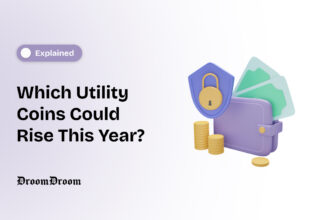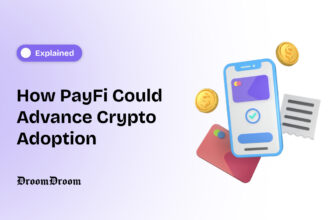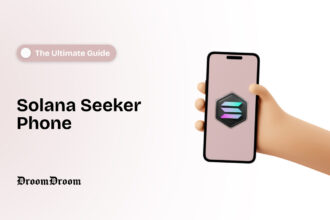The blockchain space has become more innovative and ingenious following the creation of the first cryptocurrency —Bitcoin. One innovation that came into the limelight in recent years is the move-to-earn, also known as the earn-to-move, which rewards people for participating in exercise or moving around in the real world.
Move-to-earn applications are games similar to the popularized non-fungible token (NFT) gaming concept, Play-to-earn (P2E); the only distinction is that rewards in M2E are effort-based, while the latter it’s performance-based.
The creativity behind the move-to-earn design has led industry experts to predict the market to reach a $1.8 billion pinnacle by 2030, a massive surge from the current $375 million valuation at press time, according to the coin market cap. Some of the most prominent M2E apps putting it on this map are StepN, Step App, SweatCoin, Genopets, Dotmoovs, and Calo.
While this market potential seems to attract, there is a debate that the move-to-earn won’t reach such peaks, some suggesting an extended bear market will contribute to the effect and others judging the mechanism behind move-to-earn— despite the games amassing a vast number of participants and gamers showing dutiful interest.
This article answers whether move-to-earn games will remain a dominant trend in the blockchain and crypto space and if they will live up to experts’ expectations.
Understanding More About Move-to-Earn
Move-to-Earn is one of the latest sensations in the blockchain industry that aims at helping individuals keep fit and maintain a healthy lifestyle through physical activities such as sports, exercise, etc.—and incentivizing these actions through crypto and NFTs. Replies under a tweet from Step App show how much some of its followers earns:
👋Good morning, Steppers! 🚶🏃
How much $KCAL did you earn last time?
— Step App (@StepApp_) January 6, 2023The concept behind the move-to-earn takes cues from the play-to-earn crypto games, except that the mechanism for the former is a bit more sophisticated; it combines Global Positioning System (GPS) on the user’s smartphone, blockchain technology, certain DeFi concepts, in-game tokens and NFTs, and gaming elements. With this, users’ actions can be verified and rewarded accordingly.
M2E spreading wide is an effect of a lucrative gateway it unlocked for people to monetize their fitness goals—helping them add some delight to the process. As expected, move-to-earn apps are considered GameFi rather than FitnessFi, primarily due to the gaming experience attached to the process.
How Move-to-Earn Works?
The way the move-to-earn application works is straightforward. Anyone familiar with the play-to-earn games will grab a picture of how move-to-earn works.
First-time users may be required to purchase an in-game NFT, a sneaker. The type and worth of NFT purchased determines players’ rank in the game and earning potential. Once that is settled, the M2E app connects to the player’s GPS linked to their smartphone dedicated to the game.
As a player progresses, the earnings are in cryptocurrencies used in the game or as NFTs. Users use a secondary market such as OpenSea to convert earnings to another currency to complete the transaction.
There are four ways to earn from M2E apps. The most common is earning by exercising and working out, where players are rewarded with in-game tokens. Another is trading in-game assets using a secondary market.
The other two methods include staking, which requires players to stake in-game NFTs to receive a reward; StepN, the most prevalent M2E app, has this option. The second mode of earning here is minting, which involves users occasionally minting special in-game NFTs that are eventually sold on a secondary market; so far, StepN and Step App are M2E apps that give users this option.
As time flies, there’s a possibility to do more with web3 fitness applications and a more robust earning scheme.
Will Move-to-Earn Apps Become The Future?
With a market capitalization of over $375 million and a projected potential valuation of $1.8 billion by 2030, it’s glaring and evident that M2E comes across as a significant piece in the crypto and blockchain space and how disruptive it is; It reflects how participants embrace the new tech. In 2021, the market valuation of move-to-earn fitness apps was $391.7 million, according to Grand View Research, a significant distance from its current valuation, reflecting the impact of the bear market on the move-to-earn ecosystem.
The reason behind the growth of the move-to-earn ecosystem since its early days can be associated with its easy-to-use interface. It allows the effortless onboarding of people already in fitness and those willing to get started. The upside is these new entrants are now crypto-aware and gradually adopting other crypto products.
Why M2E Will Live to Expectations
The Move-to-earn ecosystem is expected to shift the space completely, remain at the top of the board, and is deemed the future of crypto for several reasons. Three significant factors contribute to why Move-to-earn is to be the future and why it will live up to expectations.
Adoption Of a Healthy Lifestyle
One primary driver for why move-to-earn is on the upsurge is individuals wanting to adopt a healthy lifestyle. There has been an increasing demand for continuous health assessment among several individuals in this category. It’s reflected in the amount spent on fitness-enabled gadgets, including smartwatches and smartphones, to help them keep track of their health.
The market for move-to-earn is predicted to explode more than this, with more people looking towards staying fit and maintaining a wholesome life through fitness activities like sports and relying on these apps to provide personal guidance or trainers’ experience that’s more interactive and into the process. Move-to-earn apps champion this market segment with their gamified experience; that’s a more engaging interface and design to keep people in the workout movement.
The M2E Model
the model behind move-to-earn is a core proponent. Move-to-earn apps such as STEPN and SweatCoin provide an avenue for people to keep healthy and earn while smashing their fitness goals. It’s explained best as getting paid to do what matters most to one’s health—the incentivization scheme ushers in a new approach to working out and jogging. This way introduces more people to using web3 fitness apps and directly or indirectly into blockchain space.
Room For Innovation
One facet of the blockchain space is the continuous innovation that improves it. A typical illustration was the creation of a proof-of-stake consensus mechanism to solve the inherent problems (scalability and energy consumption) of the proof-of-work initiative previously used by Ethereum. Innovation in this space is influenced by the blockchain’s open-source, transparent, and decentralized nature.
There’s a forecast for more innovation coming into the move-to-earn ecosystem that will entice participation and more people to join the space. The anticipation of the integrated features into the move-to-earn will lure people into becoming more active in the blockchain space and drive the adoption among previous bystanders.
Notable Move-to-Earn Apps
Several move-to-earn apps are paving the way and at the root of driving adoption for the M2E ecosystem. Here are some of the applications at the forefront of this:

- StepN: is one of the leading M2E apps. It was launched in 2022 and has grown to over $300 million valuation. To start, users must purchase or rent a pair of NFT sneakers on its platform. The app is built on the Solana blockchain and uses GST and GMT tokens, available on cryptocurrency exchanges such as Binance, Phemex, Uniswap, Coinbase, and Bitrue. The StepN app is available on browsers and mobile.
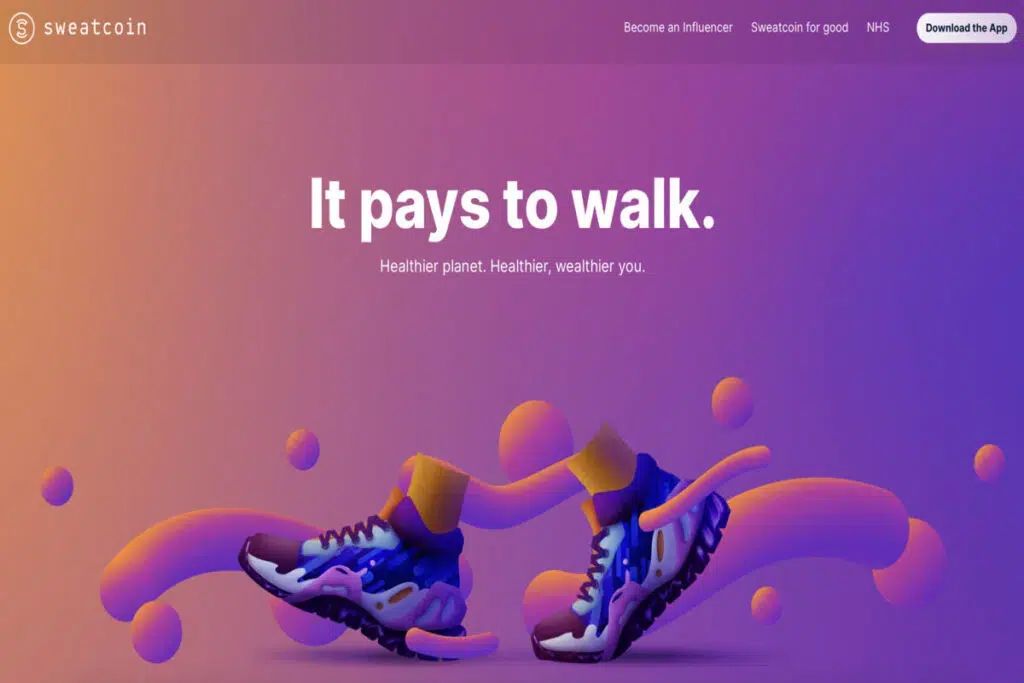
- Sweatcoin: comes next in line and has a market valuation of $53 million. One impressive aspect of Sweatcoin is its partnership scheme, such as the one with the UK’s National Health Service (NHS), to see more people onboarded to its web3 fitness application. It uses Sweat as its token. The Sweatcoin app is built on the Near blockchain, and, unlike most apps, there’s no need for an initial purchase to get started.

- Step App: is a web3 fitness app that tags itself as the future of fitness. It parallels StepN, i.e Players need to purchase NFT sneakers on its platform to start earning, and have two official tokens, FITFI and KCAL, just like StepN. Step App is valued at $37 million and is built on the Avalanche blockchain, available for iOS and Android devices.
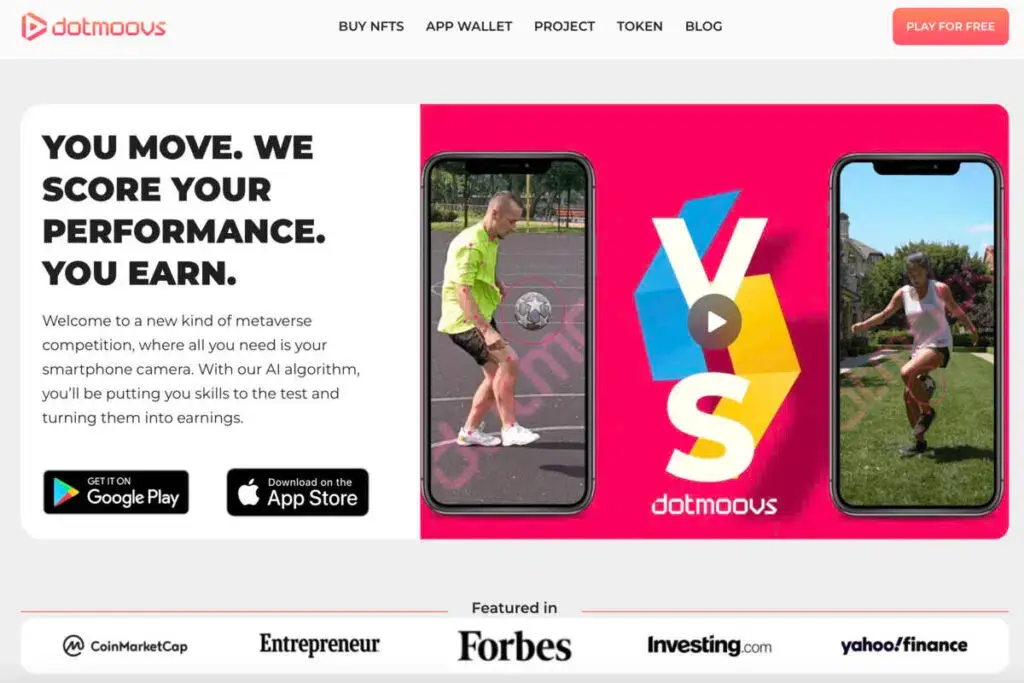
- DotMoovs: is one of the innovative move-to-earn apps that combines the power of artificial intelligence, blockchain, and NFTs in rewarding players for engaging in sporting activities. Unlike most M2E apps, DotMoovs is a peer-to-peer fitness platform built on the Polkadot blockchain. The market cap is slightly above $7 million and it uses the in-game token called MOOV.

- Genopets: is the first free-to-play, move-to-earn app. Meaning, players don’t need to purchase an NFT before using it. Like other M2E apps, it rewards players in crypto and in-game tokens. Genopets is valued slightly above $7 million and uses GENE as its in-game token.
Other prominent move-to-earn applications include OliveX, Digital Fitness, MoveZ, and Calo.
The Impact of Move-to-Earn
There are different impacts where the success of the move-to-earn ecosystem will be observed the most. Some of them include the following:
Increased Adoption Rate
An apparent impact of a move-to-earn success is that it increases the potential to onboard more people to use blockchain and crypto-based products. This will be product-driven—the gamified experience and incentivization—and word-of-mouth driven. Fred Ehrsam, the former co-founder of Coinbase, has a theory regarding the impact of crypto games, like M2E apps; according to his tweet, he believes “games with crypto-based money or items get popular,” and will help crypto get up to “1 billion users.”
Boost Earning Potentials
The incentivization economics behind the M2E applications will help individuals earn more passively from activities they usually would have engaged in. Players can earn vastly depending on the effort devoted to completing challenges and other activities.
Improvement in the Health Sector
M2E applications will influence the lifestyle of many; it will steer the need to sustain a healthy and fit lifestyle. Now, there are more reasons to get immersed in healthful activities without thinking of them as a chore.
Community Building
The success of the M2E fitness apps will reflect a stronger community that is more engaged and informed about the crypto industry. An upside will be an increased number of crypto evangelists and participants willing to contribute to the growth of the space.
A Twitter poll by Step App that garnered 73% “Yes” votes showed how willing people are in building community by introducing their friends to the M2E app. The tweet read:
👋 Happy Saturday Step App Fam!
Would you or your friends be interested in using a TRIAL SNEAK to explore our app before starting to move and earn with #StepApp?
— Step App (@StepApp_) February 11, 2023Conclusion
Move-to-earn apps have become a disruptive innovation, leading the crypto industry into more use cases than previously known. Its model combines gaming concepts and incentives and is a suitable means of driving adoption for the crypto industry as a whole since it taps into existing demography interested in remaining fit and another segment willing to earn from involving in physical workouts and exercises.
The growth potential for move-to-earn apps in the space is vast as it solves a genuine social problem and matches it with blockchain solutions. Three key factors will push M2E apps to attain monumental grounds; the desire for a healthy lifestyle, the economic model behind M2E, and room for innovation.

















